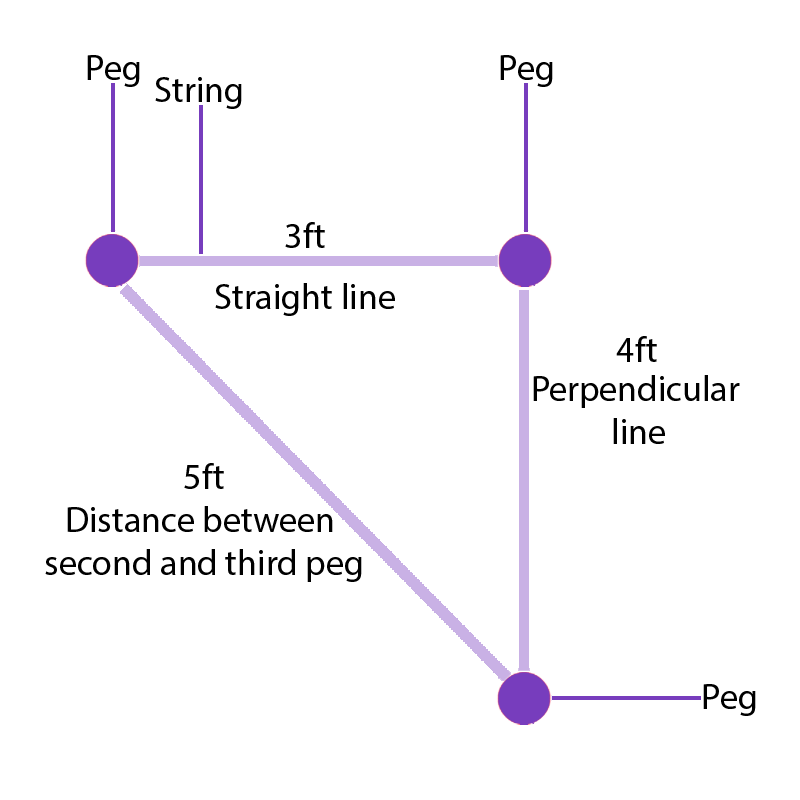Sometimes even the most difficult tasks require old-school mathematical equations to help you out. The ‘3-4-5 method’ is one of those you’d be surprised to return to in many construction projects. Here you can find out what the 3-4-5 method is and how to use it!
Table of contents:
What is the 3-4-5 method?
The 3-4-5 method is in fact a simple name for one of the most classic mathematical processes in history – the Pythagorean theorem! Not many people are aware of its origins, but it can be pretty handy in certain construction projects.
What can the 3-4-5 method be used for?
This method can be used in a variety of projects. Though typically it is anywhere that requires confirmation of squared corners and ensuring precise 90° angles for building work.
Here is a brief list of projects you can use the 3-4-5 method for:
- Decking
- Fencing
- and many more!
How to use the 3-4-5 method
A common example of the 3-4-5 method is by setting out a triangle shape. One side measures three feet long (the straight line), the second four feet long (the perpendicular line) and the last five feet long (across) – hence the perfectly suited name ‘3-4-5 method’.
What you will need
Items you’ll need include:
- String
- Tape measure
- Three timber pegs or pins (one for each corner of the triangle).
For this example we will be referring to pegs:
Step one: Take your first peg and place it at the corner where you want the 90° angle to sit (the corner where the shorter sides connect).
Step two: Take your tape measure and measure outwards a distance of three feet from that first corner peg on the straight line.
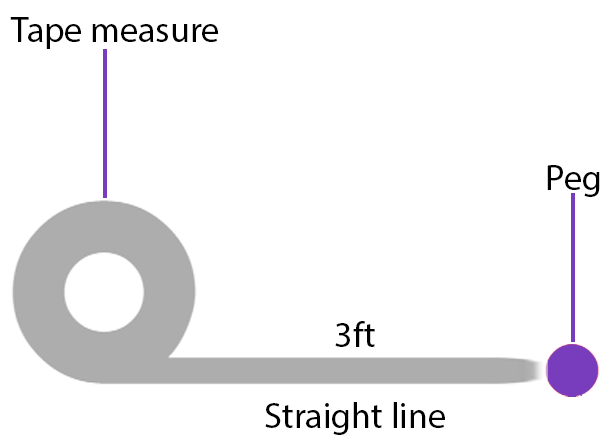
Step three: Place the next peg at the end of the three-foot measurement.
Step four: Attach string from the first peg to the second peg – make sure it’s pulled tight for an accurate length.
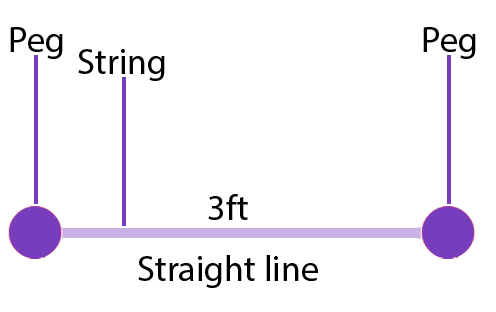
Step five: Take your tape measure again and measure outwards a distance of four feet on the perpendicular line from the first peg.
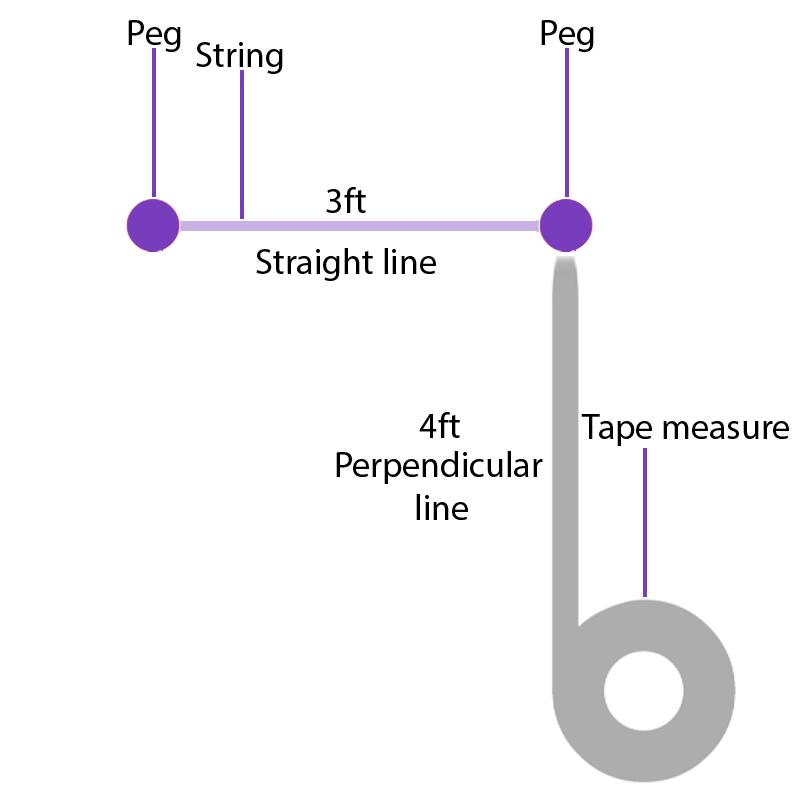
Step six: Again, place a peg at the end of the measurement and attach the string from the first peg to the new peg.
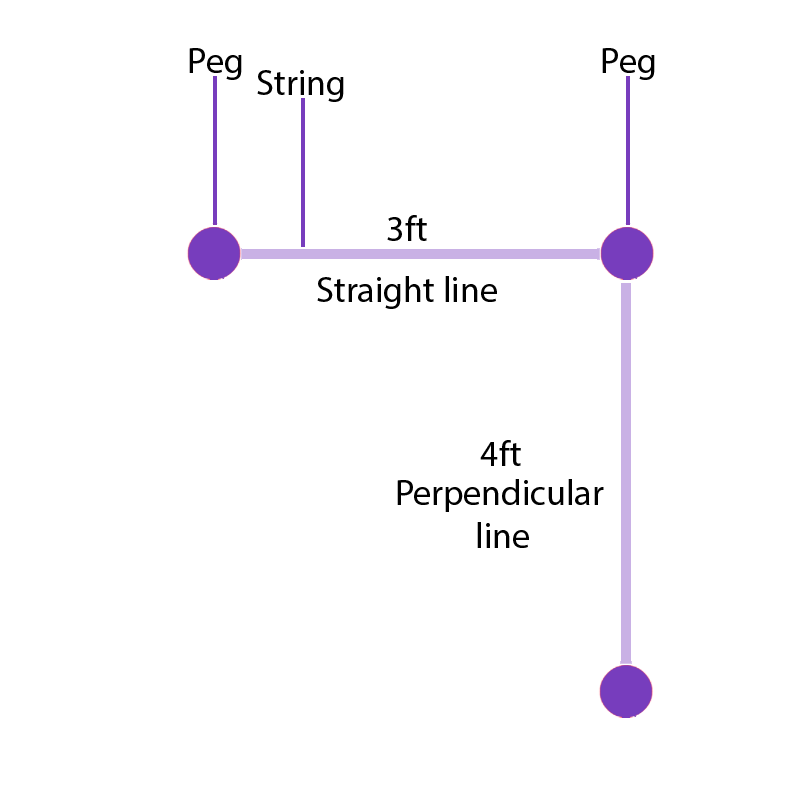
Step seven: Now measure the distance between the second and third peg – this distance should be five feet.
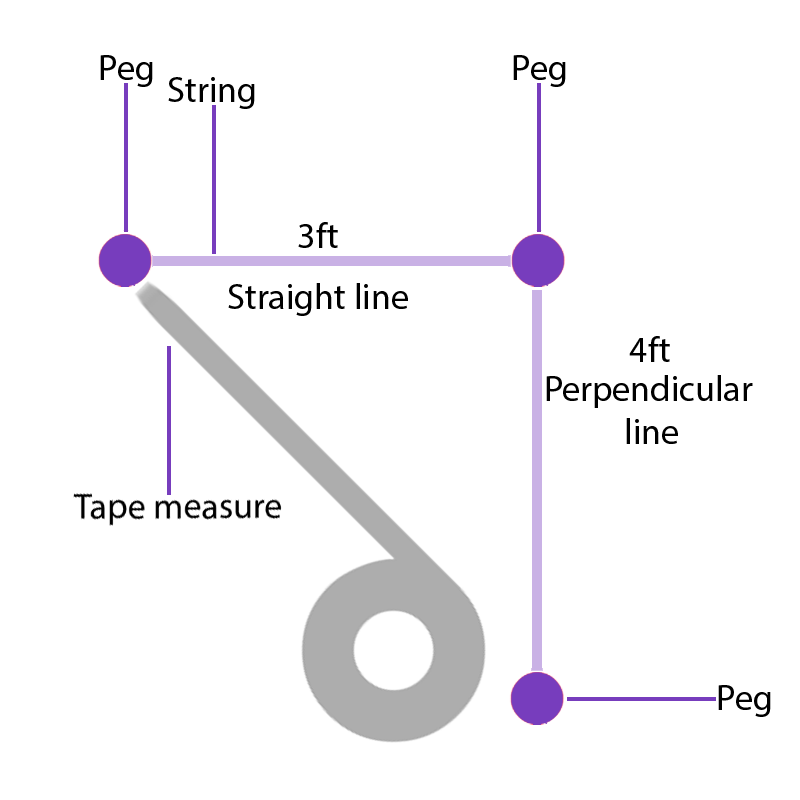
With that, you should be able to have a perfect 90° angle at the first peg location!
